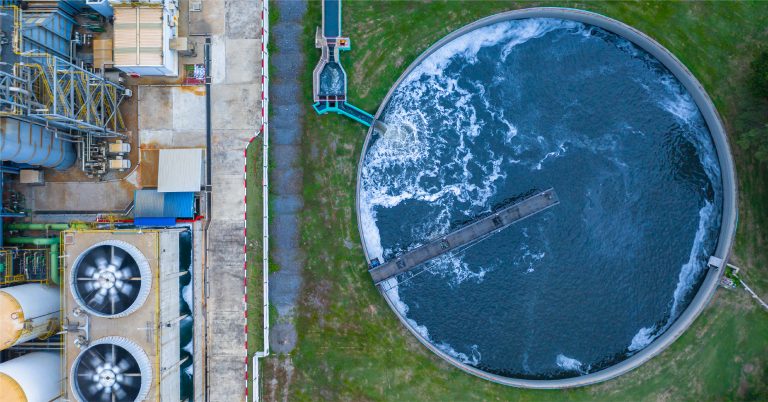Nepal, a country blessed with abundant water resources from the Himalayas, faces increasing pressure on its water quality due to urbanization, population growth, and industrialization. As the demand for clean water grows, implementing effective wastewater treatment systems becomes crucial.
Ensuring that wastewater is treated properly is essential for maintaining safe and potable water for communities, supporting agricultural productivity, and meeting the needs of various industries that rely on clean water. Therefore, wastewater treatment is no longer just an environmental responsibility but a necessity for Nepal’s socio-economic development.
Understanding Waste Water Treatment in Nepal
Wastewater treatment is the process of removing harmful contaminants from wastewater to make it safe for discharge into the environment or for reuse. It involves physical, chemical, and biological methods to purify water. In Nepal, wastewater comes from several sources, including domestic households, industries, and agricultural activities.
Industrial wastewater, laden with hazardous chemicals, often finds its way into nearby water bodies, while agricultural runoff contains excess nutrients and pesticides. The lack of proper wastewater treatment systems exacerbates these issues. Rural areas face their challenges, such as poor sanitation infrastructure, leading to contamination of local water sources.
The challenges in managing wastewater treatment in Nepal include insufficient infrastructure, lack of awareness, and inadequate regulatory enforcement. As the population grows and urban areas expand, these problems will only intensify, necessitating robust and scalable wastewater treatment solutions.
Waste Water Treatment Plant: Key Components and Their Role
A wastewater treatment plant plays a pivotal role in managing and treating wastewater before it is released into the environment. The treatment process generally involves three main stages: primary, secondary, and tertiary treatment.
- Primary Treatment: In this stage, large solids are removed from wastewater through sedimentation or filtration.
- Secondary Treatment: This stage focuses on removing dissolved and suspended organic matter through biological processes.
- Tertiary Treatment: The final stage ensures that the water meets high standards of purity before being released.
Nepal utilizes both centralized and decentralized wastewater treatment plants depending on the location and needs of the community. Centralized plants are generally found in urban areas, servicing large populations, while decentralized systems are used in rural or remote locations where setting up large infrastructure is not feasible.
How Hazardous Waste Pollutes Water Resources
A major issue in Nepal is the presence of hazardous waste in wastewater, which can significantly pollute water resources. Hazardous waste comes from a variety of sources, including industrial chemicals, household waste, and medical waste. The impact of hazardous waste on water resources is particularly severe in Nepal’s densely populated areas, where untreated industrial wastewater contaminates rivers and lakes, making the water unsafe for consumption and irrigation. This situation highlights the urgent need for better regulation, awareness, and the adoption of advanced wastewater treatment systems to prevent the continued degradation of Nepal’s water resources.
Effective Methods for Waste Water Treatment in Nepal
Several wastewater treatment methods are currently being implemented in Nepal to address the issue of pollution. These methods can be broadly categorized into biological, chemical, and physical processes.
- Biological Treatment: This method uses microorganisms to break down organic waste.
- Chemical Treatment: These methods help to neutralize harmful substances before the water is released back into the environment.
- Physical Treatment: Physical processes like sedimentation, filtration, and screening are often used in the primary stages of treatment to remove larger particles from wastewater.
Ion Exchange’s Impact on Enhancing Waste Water Treatment in Nepal
Ion Exchange, a global leader in water and environmental management, has been playing a vital role in advancing wastewater treatment in Nepal. The company offers a wide range of innovative solutions tailored to the country’s specific needs.
Ion Exchange’s state-of-the-art wastewater treatment plants offer innovative, energy-efficient, and cost-effective solutions for water management. By recycling wastewater and minimizing waste through product recovery, their integrated systems achieve zero liquid discharge, helping industries conserve water and reduce environmental impact. Using advanced technologies such as membranes, advanced oxidation, and evaporation, they tailor treatment schemes to specific industry needs after thorough site surveys and pilot studies. These solutions benefit a wide range of industries, including power plants, fertilizers, electronics, textiles, chemicals, pharmaceuticals, and more, delivering both environmental protection and a strong return on investment. Their range of solutions includes:
Conclusion: Future of Waste Water Treatment in Nepal
The future of wastewater treatment in Nepal lies in adopting sustainable, scalable solutions that can meet the growing demands of the population while preserving the country’s natural water resources. Continued investment in wastewater treatment infrastructure, the adoption of advanced technologies, and the enforcement of stricter regulations are essential for addressing water pollution challenges. By focusing on effective wastewater treatment methods and collaborating with experts like Ion Exchange, Nepal can ensure a cleaner, safer, and more sustainable future for its water resources.


